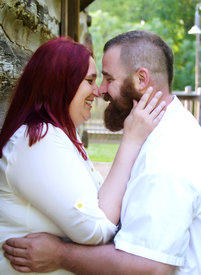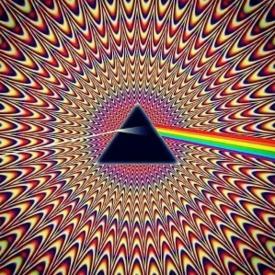Possible Microwave Effects on Your Biophotons

jknops2
Posts: 171 Member
Ok, I was reading some posts on microwaves and the person refered to this web page. I don't even know where to start. Biophotonics. I thought I had seen it all. HOW many idiots are out there that actually believe this???? And What Next? Any suggestions???
http://articles.mercola.com/sites/articles/archive/2010/05/18/microwave-hazards.aspx
" Biophotonics is the study, research, and applications of photons in their interactions within and on biological systems. Much of the work in the area of biophotons was done in Germany. Dr. Dietrich Klinghardt discusses biophotons in our 2008 interview.
Biophotons are the smallest physical units of light that are stored in and used by all biological organisms—including you. Vital sun energy finds its way into your cells via the food you eat, in the form of these biophotons.
Biophotons contain important bio-information and are very important to many vital processes in your body. They are partly responsible for your feeling of vitality and well-being. You gain biophotons by eating foods rich in them, such as naturally grown fresh vegetables and sun-ripened fruits, which are rich in light energy.
The more light energy a food is able to store, the more nutritious it is.
If the "microwave effect" exists (as you shall see, there is a huge amount of evidence that it does), then microwaves can potentially destroy biophotons in the same way that it alters other structures, rendering your food dead and lifeless.
It seems quite plausible that microwaves could disrupt or destroy biophotons, since they are capable of breaking apart DNA bonds!
As far as I can find, there haven't been any studies of the direct effects of microwave radiation on biophotons, but it seems like an important angle of investigation for the future."
http://articles.mercola.com/sites/articles/archive/2010/05/18/microwave-hazards.aspx
" Biophotonics is the study, research, and applications of photons in their interactions within and on biological systems. Much of the work in the area of biophotons was done in Germany. Dr. Dietrich Klinghardt discusses biophotons in our 2008 interview.
Biophotons are the smallest physical units of light that are stored in and used by all biological organisms—including you. Vital sun energy finds its way into your cells via the food you eat, in the form of these biophotons.
Biophotons contain important bio-information and are very important to many vital processes in your body. They are partly responsible for your feeling of vitality and well-being. You gain biophotons by eating foods rich in them, such as naturally grown fresh vegetables and sun-ripened fruits, which are rich in light energy.
The more light energy a food is able to store, the more nutritious it is.
If the "microwave effect" exists (as you shall see, there is a huge amount of evidence that it does), then microwaves can potentially destroy biophotons in the same way that it alters other structures, rendering your food dead and lifeless.
It seems quite plausible that microwaves could disrupt or destroy biophotons, since they are capable of breaking apart DNA bonds!
As far as I can find, there haven't been any studies of the direct effects of microwave radiation on biophotons, but it seems like an important angle of investigation for the future."
0
Replies
-
Dr mercola can and should be disregarded entirely.0
-
What's a microwave? I thought they were called Death Boxes now.0
-
I'm confused. So, biophotons are the smallest unit of light in your body; are they smaller than normal photons? Also, what sort of "bio-information" do these biophotons contain? Like, other than reflections and stuff? Also, where in the body are these biophotons stored? Fat cells? Blood? I'm terrifically curious. Do biophotons have wave properties or do they lose those and just become particles in the body? Are the photons themselves biological, in that they are living organisms?0
-
The death box will render our "food dead AND lifeless."
Not JUST dead but still with a few life signs, like walking, audible moans, ingesting brains for nutrients.
So, in other words, the death box will save us in a Zombie Apocalypse0 -
I promised myself to be more respectful and nice on the forums. To the OP, great post. To anyone who believes this nonsense.. /facepalm.
I love my microwave!0 -
 0
0 -
I promised myself to be more respectful and nice on the forums. To the OP, great post. To anyone who believes this nonsense.. /facepalm.
I love my microwave!
^^ Me too!! I'm willing to bet there were all kinds of people who were against electric stoves way back when too because the electrical force would destroy the food...
Any method of heating foods and liquids changes it - doesn't matter if its over an open fire, in an oven or in the microwave. Same, same, same. It's called cooking.0 -
^ This. I consider him about as unbiased and reliable an information source as Dr. Oz.Dr mercola can and should be disregarded entirely.0 -
quack.0
-
This explains everything. I microwave all my sun rich food and have been feeling less healthy recently. A quick biophoton check (you can do it online) shows I am only 35% charged!
Now looking for something to buy to make it better! I'll let you know how I get on.0 -
Lol, there are microwaves OUTSIDE of a microwave oven. Microwaves are humming on us right now. All "biophotons" should be (*#&ed up if this claim from Mercola were true.
A.C.E. Certified Personal and Group Fitness Trainer
IDEA Fitness member
Kickboxing Certified Instructor
Been in fitness for 28+ years and have studied kinesiology and nutrition0 -
This explains everything. I microwave all my sun rich food and have been feeling less healthy recently. A quick biophoton check (you can do it online) shows I am only 35% charged!
Now looking for something to buy to make it better! I'll let you know how I get on.
hahahaha 35% charged, via online calculator. I love it
I will never give up the microwave.0 -
Mercola is a loon0
-
http://scienceblogs.com/insolence/2011/01/24/i-prefer-my-food-dead-thank-you-very-muc/
I'm with Orac ^^ I'll take my food dead thanks. And also lifeless.0 -
No, this is absolute garbage. The wavelength of light that is needed to damage DNA lies in the higher energy regions of the electromagnetic spectrum, the higher end of the Ultra-violet (10 x 10^-9 m to 400 x 10^-9 m), the X-Ray (0.01 x 10^-9 to 10 x 10^-9 m), or the Gamma (< 0.02 x 10^-9 m).
Microwave light lies in the low energy region of the electromagnetic spectrum, or 1 mm to 1 m.
Furthermore, the photon energy required to break one of the chemical bonds of DNA, if we use the canonical equations relating the wavelength of light to the energy of a photon:
E = hν
where E is the energy (J, Joules which is a unit of energy), h is Plank's Constant (6.626 × 10-34 J s), and ν is the frequency (s^-1) of the wavelength of light. The frequency is also expressed in terms of the wavelength
ν= c/λ
where c is the speed of light (2.9979 x 10^8 m/s) and λ is the wavelength of light (in meters, m).
So, the energy for a photon is
E = hc/λ
Plugging in the values for the speed of light, Plank's constant, and the higher end of the Microwave region, or 1 mm (1 x 10^-3 m), the energy of a photon is
E = [(6.626 x 10^-34 Js)(2.9979 x 10^8 m/s)]/ (1 x 10^-3 m) = 1.986 x 10^-22 J
Similarly, the energy of a photon in the lower and upper regions of the Electromagnetic spectrum are
E = [(6.626 x 10^-34 Js)(2.9979 x 10^8 m/s)]/ (400 x 10^-9 m) = 4.966 x 10^-19 J
E = [(6.626 x 10^-34 Js)(2.9979 x 10^8 m/s)]/ (10 x 10^-9 m) = 1.986 x 10^-17 J.
The bond dissociation energy, or the energy required to break the covalent bonds (the class of bond that exists between all of the atoms in DNA). The most common bonds are carbon-hydrogen (C-H), carbon-carbon (C-C), and carbon-nitrogen (C-N) with bond energies 413, 348, and 308 kJ/mol, respectively ( a mol means 6.022 x 10^23 constituent particles or atoms per mol; a mol is a unit).
So, the energy in the weakest bond (in this case the carbon-nitrogen bond is
E = (308 x 10^3 J/mol)/(6.022 x 10^23 mol^-1) = 5.115 x 10^-19 J
THEREFORE, you need to be in the Ultra-violet region of the electromagnetic spectrum.0 -
No, this is absolute garbage. The wavelength of light that is needed to damage DNA lies in the higher energy regions of the electromagnetic spectrum, the higher end of the Ultra-violet (10 x 10^-9 m to 400 x 10^-9 m), the X-Ray (0.01 x 10^-9 to 10 x 10^-9 m), or the Gamma (< 0.02 x 10^-9 m).
Microwave light lies in the low energy region of the electromagnetic spectrum, or 1 mm to 1 m.
Furthermore, the photon energy required to break one of the chemical bonds of DNA, if we use the canonical equations relating the wavelength of light to the energy of a photon:
E = hν
where E is the energy (J, Joules which is a unit of energy), h is Plank's Constant (6.626 × 10-34 J s), and ν is the frequency (s^-1) of the wavelength of light. The frequency is also expressed in terms of the wavelength
ν= c/λ
where c is the speed of light (2.9979 x 10^8 m/s) and λ is the wavelength of light (in meters, m).
So, the energy for a photon is
E = hc/λ
Plugging in the values for the speed of light, Plank's constant, and the higher end of the Microwave region, or 1 mm (1 x 10^-3 m), the energy of a photon is
E = [(6.626 x 10^-34 Js)(2.9979 x 10^8 m/s)]/ (1 x 10^-3 m) = 1.986 x 10^-22 J
Similarly, the energy of a photon in the lower and upper regions of the Electromagnetic spectrum are
E = [(6.626 x 10^-34 Js)(2.9979 x 10^8 m/s)]/ (400 x 10^-9 m) = 4.966 x 10^-19 J
E = [(6.626 x 10^-34 Js)(2.9979 x 10^8 m/s)]/ (10 x 10^-9 m) = 1.986 x 10^-17 J.
The bond dissociation energy, or the energy required to break the covalent bonds (the class of bond that exists between all of the atoms in DNA). The most common bonds are carbon-hydrogen (C-H), carbon-carbon (C-C), and carbon-nitrogen (C-N) with bond energies 413, 348, and 308 kJ/mol, respectively ( a mol means 6.022 x 10^23 constituent particles or atoms per mol; a mol is a unit).
So, the energy in the weakest bond (in this case the carbon-nitrogen bond is
E = (308 x 10^3 J/mol)/(6.022 x 10^23 mol^-1) = 5.115 x 10^-19 J
THEREFORE, you need to be in the Ultra-violet region of the electromagnetic spectrum. 0
0 -
What's a microwave? I thought they were called Death Boxes now.
This.
MFP's new "fad"0 -
No, this is absolute garbage. The wavelength of light that is needed to damage DNA lies in the higher energy regions of the electromagnetic spectrum, the higher end of the Ultra-violet (10 x 10^-9 m to 400 x 10^-9 m), the X-Ray (0.01 x 10^-9 to 10 x 10^-9 m), or the Gamma (< 0.02 x 10^-9 m).
Microwave light lies in the low energy region of the electromagnetic spectrum, or 1 mm to 1 m.
Furthermore, the photon energy required to break one of the chemical bonds of DNA, if we use the canonical equations relating the wavelength of light to the energy of a photon:
E = hν
where E is the energy (J, Joules which is a unit of energy), h is Plank's Constant (6.626 × 10-34 J s), and ν is the frequency (s^-1) of the wavelength of light. The frequency is also expressed in terms of the wavelength
ν= c/λ
where c is the speed of light (2.9979 x 10^8 m/s) and λ is the wavelength of light (in meters, m).
So, the energy for a photon is
E = hc/λ
Plugging in the values for the speed of light, Plank's constant, and the higher end of the Microwave region, or 1 mm (1 x 10^-3 m), the energy of a photon is
E = [(6.626 x 10^-34 Js)(2.9979 x 10^8 m/s)]/ (1 x 10^-3 m) = 1.986 x 10^-22 J
Similarly, the energy of a photon in the lower and upper regions of the Electromagnetic spectrum are
E = [(6.626 x 10^-34 Js)(2.9979 x 10^8 m/s)]/ (400 x 10^-9 m) = 4.966 x 10^-19 J
E = [(6.626 x 10^-34 Js)(2.9979 x 10^8 m/s)]/ (10 x 10^-9 m) = 1.986 x 10^-17 J.
The bond dissociation energy, or the energy required to break the covalent bonds (the class of bond that exists between all of the atoms in DNA). The most common bonds are carbon-hydrogen (C-H), carbon-carbon (C-C), and carbon-nitrogen (C-N) with bond energies 413, 348, and 308 kJ/mol, respectively ( a mol means 6.022 x 10^23 constituent particles or atoms per mol; a mol is a unit).
So, the energy in the weakest bond (in this case the carbon-nitrogen bond is
E = (308 x 10^3 J/mol)/(6.022 x 10^23 mol^-1) = 5.115 x 10^-19 J
THEREFORE, you need to be in the Ultra-violet region of the electromagnetic spectrum.
Indeed. Check out my profile.0 -
No, this is absolute garbage. The wavelength of light that is needed to damage DNA lies in the higher energy regions of the electromagnetic spectrum, the higher end of the Ultra-violet (10 x 10^-9 m to 400 x 10^-9 m), the X-Ray (0.01 x 10^-9 to 10 x 10^-9 m), or the Gamma (< 0.02 x 10^-9 m).
Microwave light lies in the low energy region of the electromagnetic spectrum, or 1 mm to 1 m.
Furthermore, the photon energy required to break one of the chemical bonds of DNA, if we use the canonical equations relating the wavelength of light to the energy of a photon:
E = hν
where E is the energy (J, Joules which is a unit of energy), h is Plank's Constant (6.626 × 10-34 J s), and ν is the frequency (s^-1) of the wavelength of light. The frequency is also expressed in terms of the wavelength
ν= c/λ
where c is the speed of light (2.9979 x 10^8 m/s) and λ is the wavelength of light (in meters, m).
So, the energy for a photon is
E = hc/λ
Plugging in the values for the speed of light, Plank's constant, and the higher end of the Microwave region, or 1 mm (1 x 10^-3 m), the energy of a photon is
E = [(6.626 x 10^-34 Js)(2.9979 x 10^8 m/s)]/ (1 x 10^-3 m) = 1.986 x 10^-22 J
Similarly, the energy of a photon in the lower and upper regions of the Electromagnetic spectrum are
E = [(6.626 x 10^-34 Js)(2.9979 x 10^8 m/s)]/ (400 x 10^-9 m) = 4.966 x 10^-19 J
E = [(6.626 x 10^-34 Js)(2.9979 x 10^8 m/s)]/ (10 x 10^-9 m) = 1.986 x 10^-17 J.
The bond dissociation energy, or the energy required to break the covalent bonds (the class of bond that exists between all of the atoms in DNA). The most common bonds are carbon-hydrogen (C-H), carbon-carbon (C-C), and carbon-nitrogen (C-N) with bond energies 413, 348, and 308 kJ/mol, respectively ( a mol means 6.022 x 10^23 constituent particles or atoms per mol; a mol is a unit).
So, the energy in the weakest bond (in this case the carbon-nitrogen bond is
E = (308 x 10^3 J/mol)/(6.022 x 10^23 mol^-1) = 5.115 x 10^-19 J
THEREFORE, you need to be in the Ultra-violet region of the electromagnetic spectrum.
Never should have let women go to school. Now they think they're all smart and stuff. :laugh:0 -
No, this is absolute garbage. The wavelength of light that is needed to damage DNA lies in the higher energy regions of the electromagnetic spectrum, the higher end of the Ultra-violet (10 x 10^-9 m to 400 x 10^-9 m), the X-Ray (0.01 x 10^-9 to 10 x 10^-9 m), or the Gamma (< 0.02 x 10^-9 m).
Pardon me for saying this, but NOM NOM NOM NOM NOM!0 -
Yes, biophotons seem to be tied in with the homeopathy and water memory nonsense...
Article about 1/2 way down the link:
http://www.csicop.org/si/show/alternative_medicine_and_the_laws_of_physics/0 -
Brilliant.No, this is absolute garbage. The wavelength of light that is needed to damage DNA lies in the higher energy regions of the electromagnetic spectrum, the higher end of the Ultra-violet (10 x 10^-9 m to 400 x 10^-9 m), the X-Ray (0.01 x 10^-9 to 10 x 10^-9 m), or the Gamma (< 0.02 x 10^-9 m).
Microwave light lies in the low energy region of the electromagnetic spectrum, or 1 mm to 1 m.
Furthermore, the photon energy required to break one of the chemical bonds of DNA, if we use the canonical equations relating the wavelength of light to the energy of a photon:
E = hν
where E is the energy (J, Joules which is a unit of energy), h is Plank's Constant (6.626 × 10-34 J s), and ν is the frequency (s^-1) of the wavelength of light. The frequency is also expressed in terms of the wavelength
ν= c/λ
where c is the speed of light (2.9979 x 10^8 m/s) and λ is the wavelength of light (in meters, m).
So, the energy for a photon is
E = hc/λ
Plugging in the values for the speed of light, Plank's constant, and the higher end of the Microwave region, or 1 mm (1 x 10^-3 m), the energy of a photon is
E = [(6.626 x 10^-34 Js)(2.9979 x 10^8 m/s)]/ (1 x 10^-3 m) = 1.986 x 10^-22 J
Similarly, the energy of a photon in the lower and upper regions of the Electromagnetic spectrum are
E = [(6.626 x 10^-34 Js)(2.9979 x 10^8 m/s)]/ (400 x 10^-9 m) = 4.966 x 10^-19 J
E = [(6.626 x 10^-34 Js)(2.9979 x 10^8 m/s)]/ (10 x 10^-9 m) = 1.986 x 10^-17 J.
The bond dissociation energy, or the energy required to break the covalent bonds (the class of bond that exists between all of the atoms in DNA). The most common bonds are carbon-hydrogen (C-H), carbon-carbon (C-C), and carbon-nitrogen (C-N) with bond energies 413, 348, and 308 kJ/mol, respectively ( a mol means 6.022 x 10^23 constituent particles or atoms per mol; a mol is a unit).
So, the energy in the weakest bond (in this case the carbon-nitrogen bond is
E = (308 x 10^3 J/mol)/(6.022 x 10^23 mol^-1) = 5.115 x 10^-19 J
THEREFORE, you need to be in the Ultra-violet region of the electromagnetic spectrum.
Thank you. Please stick around. :glasses: 0
:glasses: 0 -
Biophotons, beam me up, Scotty0
-
sounds legit0
-
My biophotons are doing just fine0
-
It seems it's another tool in the non-ionizing radiation opponent's waning arsenal...
http://www.quackometer.net/blog/2007/05/wi-fi-quackery-and-parliament.html0 -
I'll take two0
-
No, this is absolute garbage. The wavelength of light that is needed to damage DNA lies in the higher energy regions of the electromagnetic spectrum, the higher end of the Ultra-violet (10 x 10^-9 m to 400 x 10^-9 m), the X-Ray (0.01 x 10^-9 to 10 x 10^-9 m), or the Gamma (< 0.02 x 10^-9 m).
Microwave light lies in the low energy region of the electromagnetic spectrum, or 1 mm to 1 m.
Furthermore, the photon energy required to break one of the chemical bonds of DNA, if we use the canonical equations relating the wavelength of light to the energy of a photon:
E = hν
where E is the energy (J, Joules which is a unit of energy), h is Plank's Constant (6.626 × 10-34 J s), and ν is the frequency (s^-1) of the wavelength of light. The frequency is also expressed in terms of the wavelength
ν= c/λ
where c is the speed of light (2.9979 x 10^8 m/s) and λ is the wavelength of light (in meters, m).
So, the energy for a photon is
E = hc/λ
Plugging in the values for the speed of light, Plank's constant, and the higher end of the Microwave region, or 1 mm (1 x 10^-3 m), the energy of a photon is
E = [(6.626 x 10^-34 Js)(2.9979 x 10^8 m/s)]/ (1 x 10^-3 m) = 1.986 x 10^-22 J
Similarly, the energy of a photon in the lower and upper regions of the Electromagnetic spectrum are
E = [(6.626 x 10^-34 Js)(2.9979 x 10^8 m/s)]/ (400 x 10^-9 m) = 4.966 x 10^-19 J
E = [(6.626 x 10^-34 Js)(2.9979 x 10^8 m/s)]/ (10 x 10^-9 m) = 1.986 x 10^-17 J.
The bond dissociation energy, or the energy required to break the covalent bonds (the class of bond that exists between all of the atoms in DNA). The most common bonds are carbon-hydrogen (C-H), carbon-carbon (C-C), and carbon-nitrogen (C-N) with bond energies 413, 348, and 308 kJ/mol, respectively ( a mol means 6.022 x 10^23 constituent particles or atoms per mol; a mol is a unit).
So, the energy in the weakest bond (in this case the carbon-nitrogen bond is
E = (308 x 10^3 J/mol)/(6.022 x 10^23 mol^-1) = 5.115 x 10^-19 J
THEREFORE, you need to be in the Ultra-violet region of the electromagnetic spectrum.
Logic! :noway:
We don't need no stinkin' logic!
(WTG! I knew this was true, but could never do the math to explain it.)0 -
I ran across this topic a couple of months ago. According to the article, Russia, and a few other countries I think, have outlawed using microwave ovens for food preparation.
I cannot speak to the safety of foods cooked in a microwave oven but I will state I prefer foods cooked by conventional methods; they just taste better. Even a simple baked potato, cooked in a conventional oven, tastes better and seems to have a better texture than those having been "nuked."0 -
No, this is absolute garbage. The wavelength of light that is needed to damage DNA lies in the higher energy regions of the electromagnetic spectrum, the higher end of the Ultra-violet (10 x 10^-9 m to 400 x 10^-9 m), the X-Ray (0.01 x 10^-9 to 10 x 10^-9 m), or the Gamma (< 0.02 x 10^-9 m).
Microwave light lies in the low energy region of the electromagnetic spectrum, or 1 mm to 1 m.
Furthermore, the photon energy required to break one of the chemical bonds of DNA, if we use the canonical equations relating the wavelength of light to the energy of a photon:
E = hν
where E is the energy (J, Joules which is a unit of energy), h is Plank's Constant (6.626 × 10-34 J s), and ν is the frequency (s^-1) of the wavelength of light. The frequency is also expressed in terms of the wavelength
ν= c/λ
where c is the speed of light (2.9979 x 10^8 m/s) and λ is the wavelength of light (in meters, m).
So, the energy for a photon is
E = hc/λ
Plugging in the values for the speed of light, Plank's constant, and the higher end of the Microwave region, or 1 mm (1 x 10^-3 m), the energy of a photon is
E = [(6.626 x 10^-34 Js)(2.9979 x 10^8 m/s)]/ (1 x 10^-3 m) = 1.986 x 10^-22 J
Similarly, the energy of a photon in the lower and upper regions of the Electromagnetic spectrum are
E = [(6.626 x 10^-34 Js)(2.9979 x 10^8 m/s)]/ (400 x 10^-9 m) = 4.966 x 10^-19 J
E = [(6.626 x 10^-34 Js)(2.9979 x 10^8 m/s)]/ (10 x 10^-9 m) = 1.986 x 10^-17 J.
The bond dissociation energy, or the energy required to break the covalent bonds (the class of bond that exists between all of the atoms in DNA). The most common bonds are carbon-hydrogen (C-H), carbon-carbon (C-C), and carbon-nitrogen (C-N) with bond energies 413, 348, and 308 kJ/mol, respectively ( a mol means 6.022 x 10^23 constituent particles or atoms per mol; a mol is a unit).
So, the energy in the weakest bond (in this case the carbon-nitrogen bond is
E = (308 x 10^3 J/mol)/(6.022 x 10^23 mol^-1) = 5.115 x 10^-19 J
THEREFORE, you need to be in the Ultra-violet region of the electromagnetic spectrum.
Logic! :noway:
We don't need no stinkin' logic!
(WTG! I knew this was true, but could never do the math to explain it.)
Science math is WAY harder than accounting math! :laugh:
Microwave ovens really suck for some things (like boiling water), but are absolutely perfect for other things.(like re-biophoton-izing a day-old donut)0
This discussion has been closed.
Categories
- All Categories
- 1.4M Health, Wellness and Goals
- 398.1K Introduce Yourself
- 44.7K Getting Started
- 261K Health and Weight Loss
- 176.4K Food and Nutrition
- 47.7K Recipes
- 233K Fitness and Exercise
- 462 Sleep, Mindfulness and Overall Wellness
- 6.5K Goal: Maintaining Weight
- 8.7K Goal: Gaining Weight and Body Building
- 153.5K Motivation and Support
- 8.4K Challenges
- 1.4K Debate Club
- 96.5K Chit-Chat
- 2.6K Fun and Games
- 4.8K MyFitnessPal Information
- 12 News and Announcements
- 21 MyFitnessPal Academy
- 1.5K Feature Suggestions and Ideas
- 3.2K MyFitnessPal Tech Support Questions



















